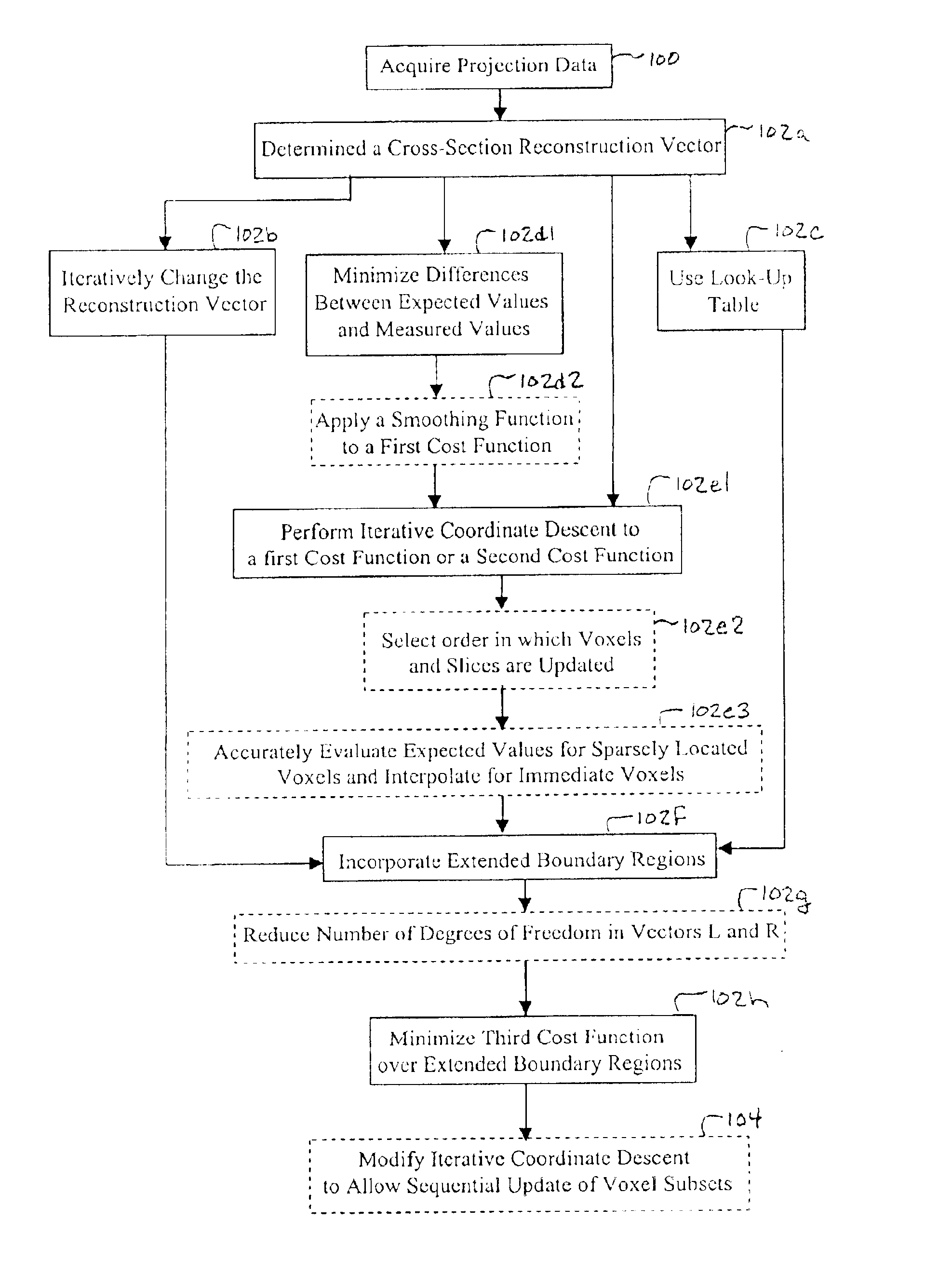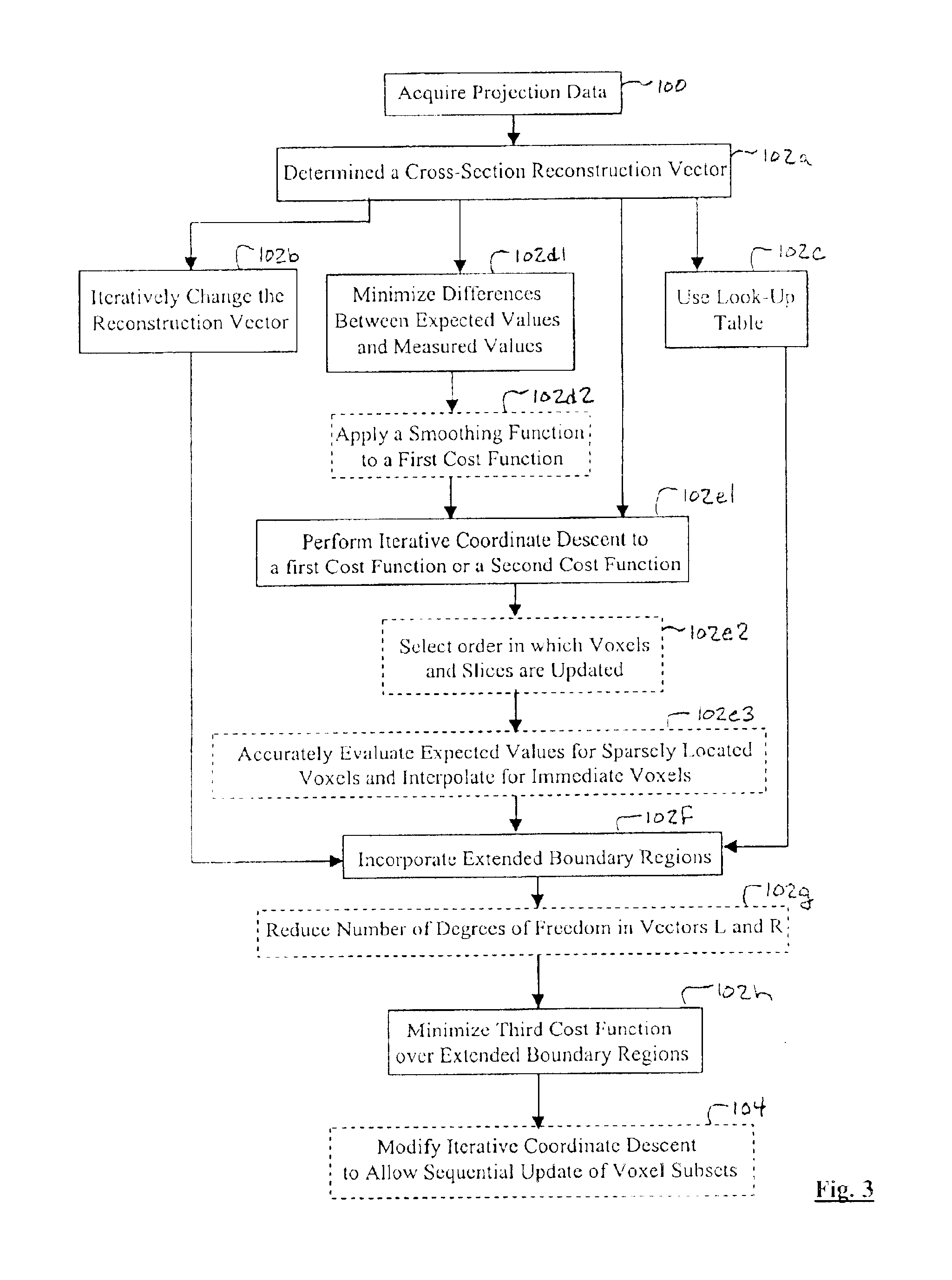Iterative reconstruction methods for multi-slice computed tomography
a computed tomography and reconstruction method technology, applied in tomography, instruments, nuclear engineering, etc., can solve the problems of reducing the scan time, introducing errors, and interpolating helical scanned data into interpolation, so as to prevent warping of image planes, minimize approximation errors, and minimize artifacts near boundary regions
- Summary
- Abstract
- Description
- Claims
- Application Information
AI Technical Summary
Benefits of technology
Problems solved by technology
Method used
Image
Examples
Embodiment Construction
[0031]It is advantageous to define several terms before describing the invention. It should be appreciated that the following definitions are used throughout this application.
Definitions
[0032]Where the definition of terms departs from the commonly used meaning of the term, applicant intends to utilize the definitions provided below, unless specifically indicated.
[0033]For the purposes of the present invention, the term “image space” refers to a set of vectors arranged in an array for use with a method of the present invention. The array may be of any number of dimensions, such as two-dimensional, three-dimensional, four-dimensional, etc. An example of an image space that may be used in a method of the present invention is a set of all possible images representable on a lattice of a given dimension. A single element (vector) of the set of the image space may be viewed on a visual display apparatus to allow a user to gain information of the interior of a scanned object.
[0034]For the p...
PUM
 Login to View More
Login to View More Abstract
Description
Claims
Application Information
 Login to View More
Login to View More - R&D
- Intellectual Property
- Life Sciences
- Materials
- Tech Scout
- Unparalleled Data Quality
- Higher Quality Content
- 60% Fewer Hallucinations
Browse by: Latest US Patents, China's latest patents, Technical Efficacy Thesaurus, Application Domain, Technology Topic, Popular Technical Reports.
© 2025 PatSnap. All rights reserved.Legal|Privacy policy|Modern Slavery Act Transparency Statement|Sitemap|About US| Contact US: help@patsnap.com



